Copyright 2020 - 2021 irantour.tours all right reserved
Designed by Behsazanhost
Imam mosque
Imam mosque
The oldest mosque in Kerman and probably in Iran. The great Malek mosque or Imam Mosque (recently) was built in the Seljuk period, and some related extra monuments that were added at the Tooranshah era are located in Imam street Kerman city. This 4 porch mosque dates back to 1349, though there was extensive modernization during the Safavid, Zand, and Qajar periods. Instead of a minaret, there is a squat clock tower atop the main (eastern) entrance portal, where the beautifully detailed tiling includes Allah / Ali cryptograms elevated above the surrounding surface.
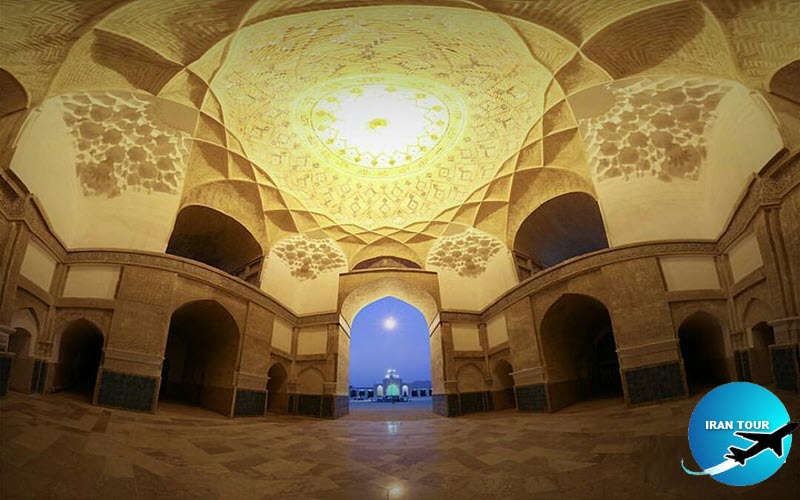 |
The Seljuk period is one of the most golden, the most significant, and at the same time the most decisive periods of history. The Imam Mosque of Kerman is one of the valuable masterpieces of Seljuk architecture in brick. It is known as the first complete urban mosque and the center of the communities of Kerman. The valuable historical, cultural, and artistic parts of Malek mosque and also its artistic valuable bricks, tiles, and plasterwork are the best creditable sources of historical studying.
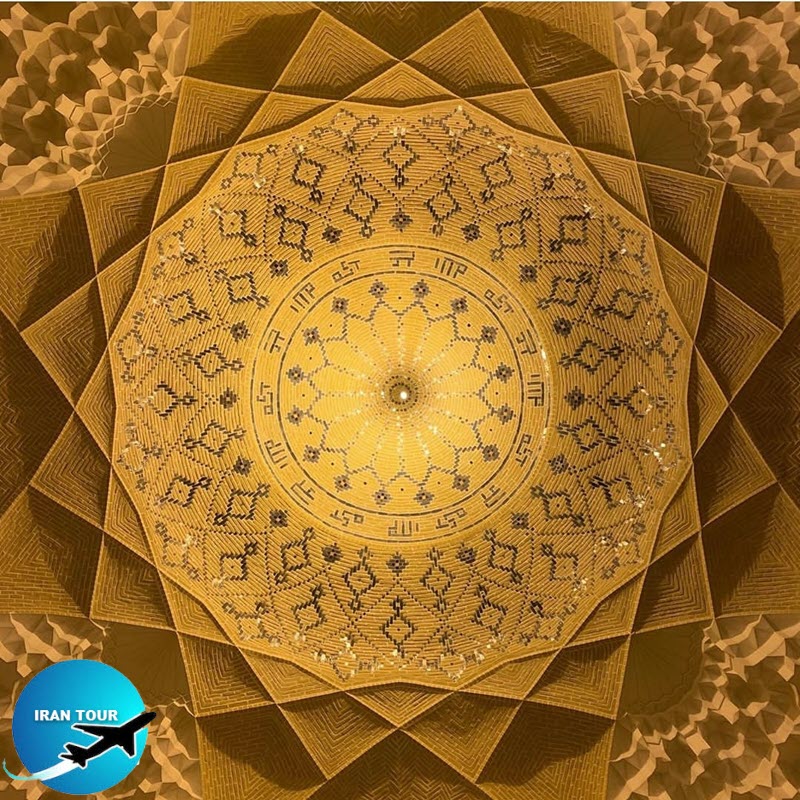 |
This mosque not only has relics of the Seljuk period but also some parts of it belong to the previous period such as Al-e buid dynasty. Among them, the Ale Boid Altars (Mihrabs) are very famous. In fact, it must be said that the most important parts of the mosque were built during this period. Seljuk architecture is one of the most effective and influential historical periods in Iran. There is no doubt that the Malek Mosque in Kerman privileged of its kind in this regard. A brick tower, surviving from the Seljuk period, located in the northeast corner of it. The other parts of the mosque were rebuilt and developed after the Seljuk period. So some architectural works and monuments from different periods can be found there.
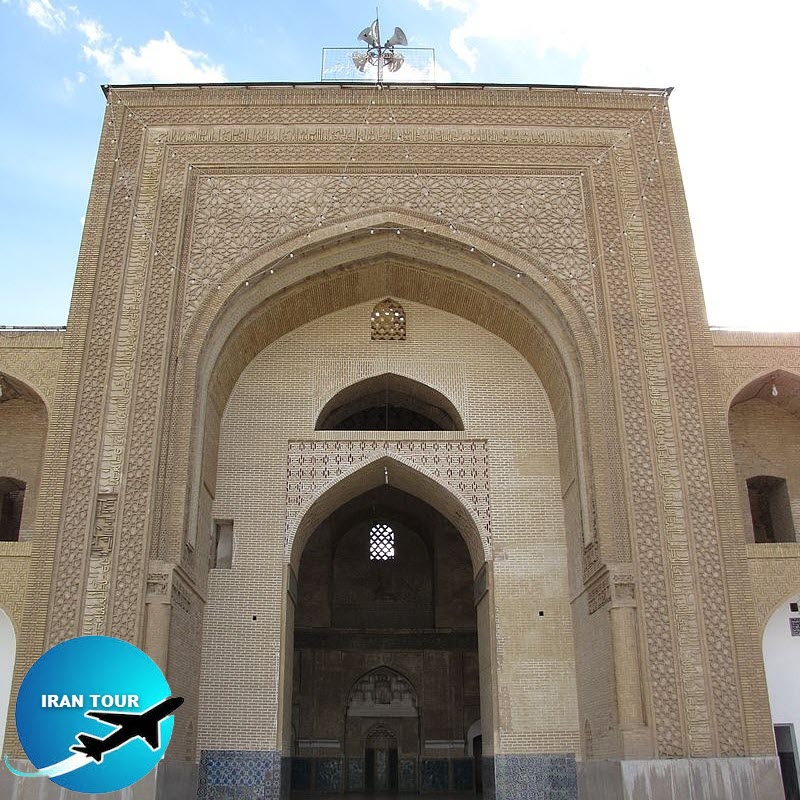 |
Imam mosque
Malek Kerman Mosque is the largest and oldest mosque in Kerman located in Imam Street. The Malek Mosque is a four Ivans mosque with about 1000 years of history. It was one of the central core of Kerman communities. This mosque imposes its prestige on the visitors by showing its historical and artistic works in different parts. Malek Mosque has 8800 Square meters and the largest porch of which is located on the west side and the rest on the north, east and east sides of the mosque.
The different parts of this mosque are:
1. Entrance Arch
This mosque currently has three entrance doors. The main entrance door is located in the northern part of the mosque. After passing through the high door, a hall with a decorated roof and Islamic decorations will face you.
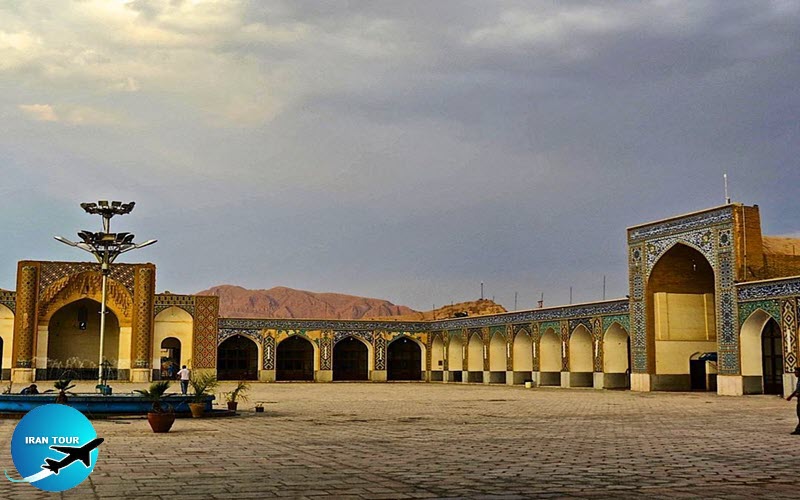 |
2-Large courtyard
The large and vast courtyard of the mosque with four porches around is a place for holding religious ceremonies.
3- Porch
The mosque is four porches. The large and main porch (Qibla) which is located on the west side of the mosque, is the most important part of the Seljuk period and at the same time the largest porch of the mosque. This porch is decorated with carved bricks and the Seljuk period's designs. Also, the designs on the walls are a relic of the Seljuk period, which is a combination of plaster and brick.
It was repaired in 1285 AH by the order of the ruler of Kerman.
4-Naves
Another part of the mosque is the naves of the mosque, which are located around the courtyard and porch and are introduced by different names. The most famous and prominent of these naves is the nave of Imam Hassan. This nave was the site of an old mosque from the first-Islamic era that has expanded.
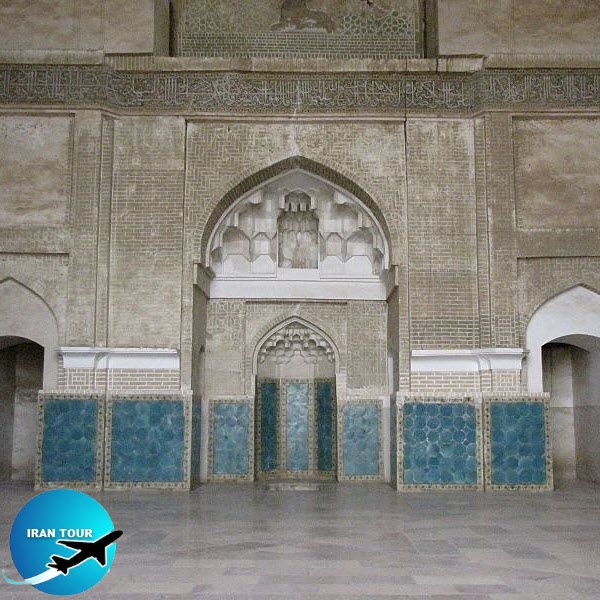 |
6-Seljuk Brick Tower5-Altar
The three beautiful decorated Altars are also the other symbols of this mosque. They built between 100 and 150 years before the Seljuk period. The main altar of the mosque with a decorated roof and two windcatchers around it will dazzle the eyes of the visitors.
The brick tower on the northeast side is one of the main parts of the Seljuk period, which is known as the Seljuk tower. This tower is located in the northeast of the mosque and its upper part has collapsed so that only 6 meters of it remains.
7-Inscriptions
The inscriptions of the mosque are another written part of this historical monument.
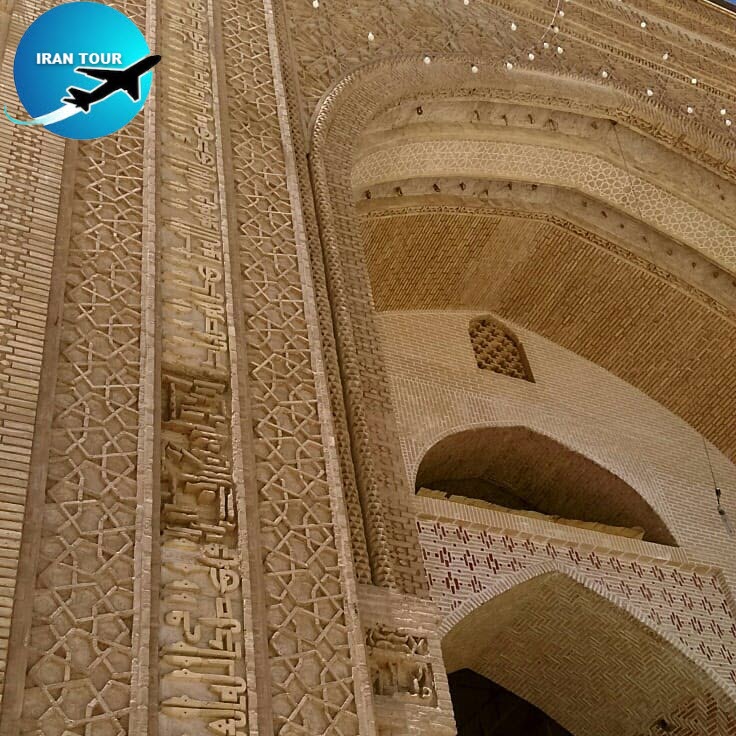 |
The Seljuk period can be considered a turning point in Iranian architecture. The composition of architectural materials like plaster and brick as a new style of decorations is one of the most important features of this period. Architects of this period created a new style of architecture by combining new materials and inventing new artistic methods. The mosque should be considered a large architectural library for several reasons. The existence of works from the period of Al-Buwayh, Seljuk, Safavid, Qajar, and contemporary, having various manifestations of architectural arrays such as Girih tiles, brickwork, plastering, and inscriptions is extremely valuable in expressive design.
- Details
- Category: Kerman HISTORICAL SITES